Written by Deborah January-Bevers
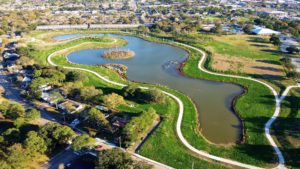
Exploration Green Park
Parks, green space, natural ponds, lakes, bioswales, and other amenities are critical to communities in Houston for sustainability, resilience, and recreation. Developers, MUDs, management districts, and landscape architects have been considering ways to increase the amount of green space and resiliency in new and older communities. As mentioned at the West Houston Associations Blues to Greens Forum in July, Resilience Plans provide communities with better protection from increased rain events, severe droughts, wildfires, riverine erosion, and other natural and man-made occurrences through increased nature-based infrastructure. A growing set of Tools in the Resilience Toolbox are available to them – including the current 1% Parks & Recreation Bond allowance, the new Texas Flood Infrastructure Fund and various public/private partnership options.
Under the 8-county Gulf-Houston Regional Conservation Plan (RCP), Houston Wilderness keeps track of the amount protected/preserved green space in each of the 8 counties. As of May 2020, 14.7% of the 8-county region (731,000 acres) has some type of protected/preserved land use – including parks, detention areas and reservoirs, riparian rights-of-way, lakes, polishing ponds, and nature trails. Over 31,000 of that 731,000 acres exists in Municipal Utility Districts (MUDs) communities, Master Planned Communities (MPCs) and Management Districts (MDs).
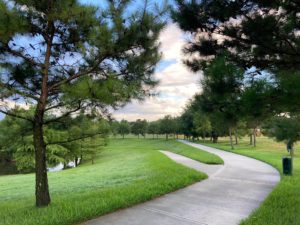
Mandolin Gardens Park
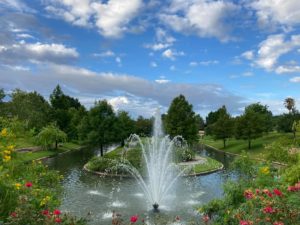
Mandolin Gardens Park
MUDs, MPCs and MDs have been creating parks and green space to serve all these needed ecosystem service purposes. A few examples include:
-
- The MPCs of Bridgeland and Cross Creek Ranch located west of Houston. These communities provide a variety of large nature-based infrastructure and recreational facilities that provide resilience and recreation to their growing communities, including enhanced ecological systems of wetlands, forests and native meadows with birding towers, pavilions, event lawns and play stations mixed in with water systems installed in the green space to allow for substantial water capture and reuse through bioswales and other filtration systems.
-
- Mandolin Gardens Park. This park forms the green heart of Harris County MUD 230, in north Houston. The $3.6 million park was constructed in 2010 with park bond funds. The project transformed the two detention basins adjacent to Summit Bridge Lane from overgrown, unused areas into a destination park with a loop trail and acres of pollinator habitat, raising home values in the adjacent neighborhoods, providing recreation to nearby residents and providing habitat to birds and pollinators. Use of various Tools in the Resilience Toolbox improve/add resilience to communities particularly for MUDs and MDs in older built-out communities.
-
- Exploration Green, the Clear Lake City Water Authority’s project to turn a former golf course into a detention pond. Starting as a drainage facility with added amenities, this pond will eventually hold 500 million gallons of stormwater. This project is currently viewed as a nature conservatory that also helps drain stormwater.
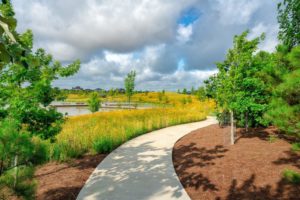
Bridgeland-Josey Lake Trail
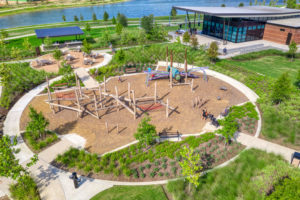
Bridgeland-Dragonfly Park
Green space, amenities, and Resilience Planning has provided benefits to communities in the time of COVID-19. These types of enhanced nature-based infrastructures around the state provides the opportunity for recreation while also social distancing is possible in all these outdoor spaces. To learn more about the green space developers are adding to Houston, join us for our MPC Ecoregions Experiences Event Program on Thursday, October 22nd from 3:00 P.M. – 4:00 P.M. To RSVP, contact Kim Philippi at kim@houstonwilderness.org.
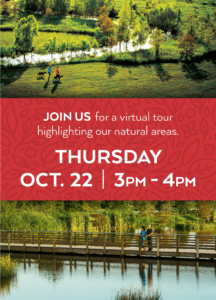
 About the Author
About the Author
Deborah January-Bevers is the President/Chief Executive Officer of Houston Wilderness, a nonprofit organization dedicated to protecting, preserving, and promoting the ten ecoregions in the Greater Houston Area.
